Teaching Piano Students to Pedal, Part 1: Training the Right Foot
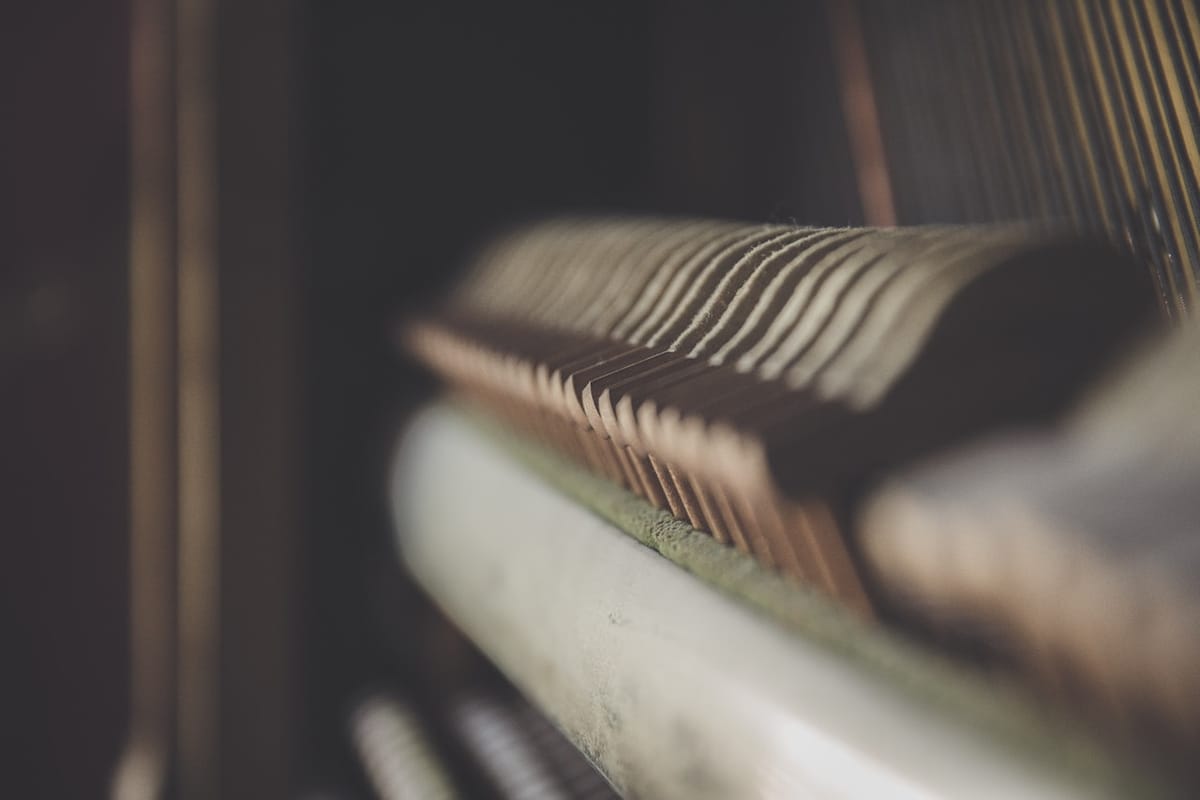
Piano teachers know the challenges of developing proper pedal technique in the students they instruct. In this first of a series of articles we’ll focus on teaching students of any age the mechanics of depressing and lifting the sustaining pedal at the desired time.
Proper pedal technique requires pianists to be able to create both separate as well as connected sounds. Control over when to depress and lift the pedal is what allows pianists to make this distinction. There are times when the pedal needs to be depressed or released either on a beat or else between beats. Learning this precise vocabulary of motions can be overwhelming to students of any age who are already busy counting and placing their hands on the correct notes. In my experience, introducing these motions independent of playing can be beneficial to many students, as it allows them to place all their focus on controlling the pedal.
The most effective exercises I’ve found for this task are published in a very helpful book by noted pedagogue Seymour Bernstein. Book IV of his Earth Music Series, published by Manduca Music Publications, is devoted to the pedals. Seymour offers a series of exercises that have us set a metronome to a moderate tempo. Students are first taught to depress the pedal on a marked beat, then release on another marked beat. After gaining fluency operating the pedal on beats they are then asked to either depress or lift between beats. This is where many students stumble, but without this skill they’ll never be able to create a legato sound using the pedal.
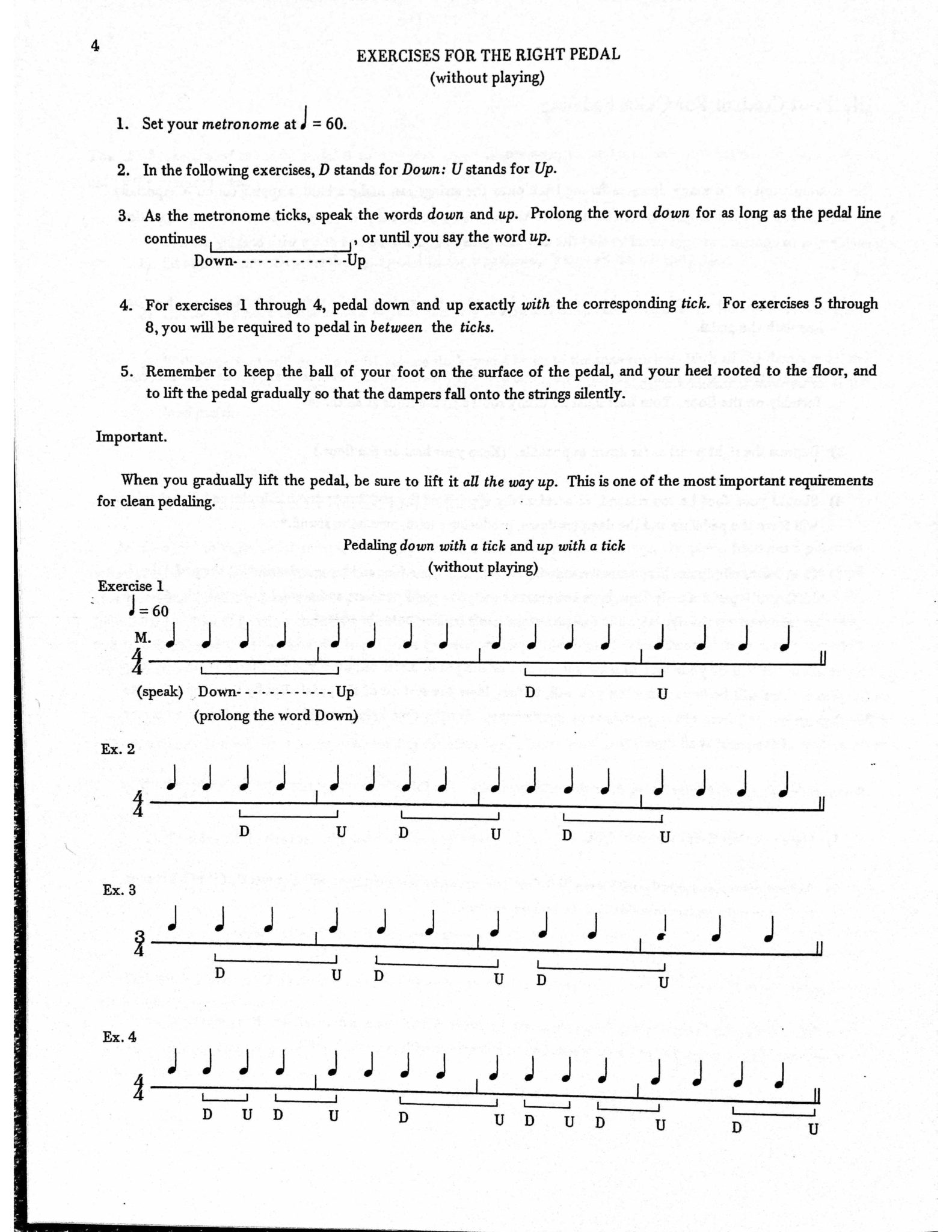
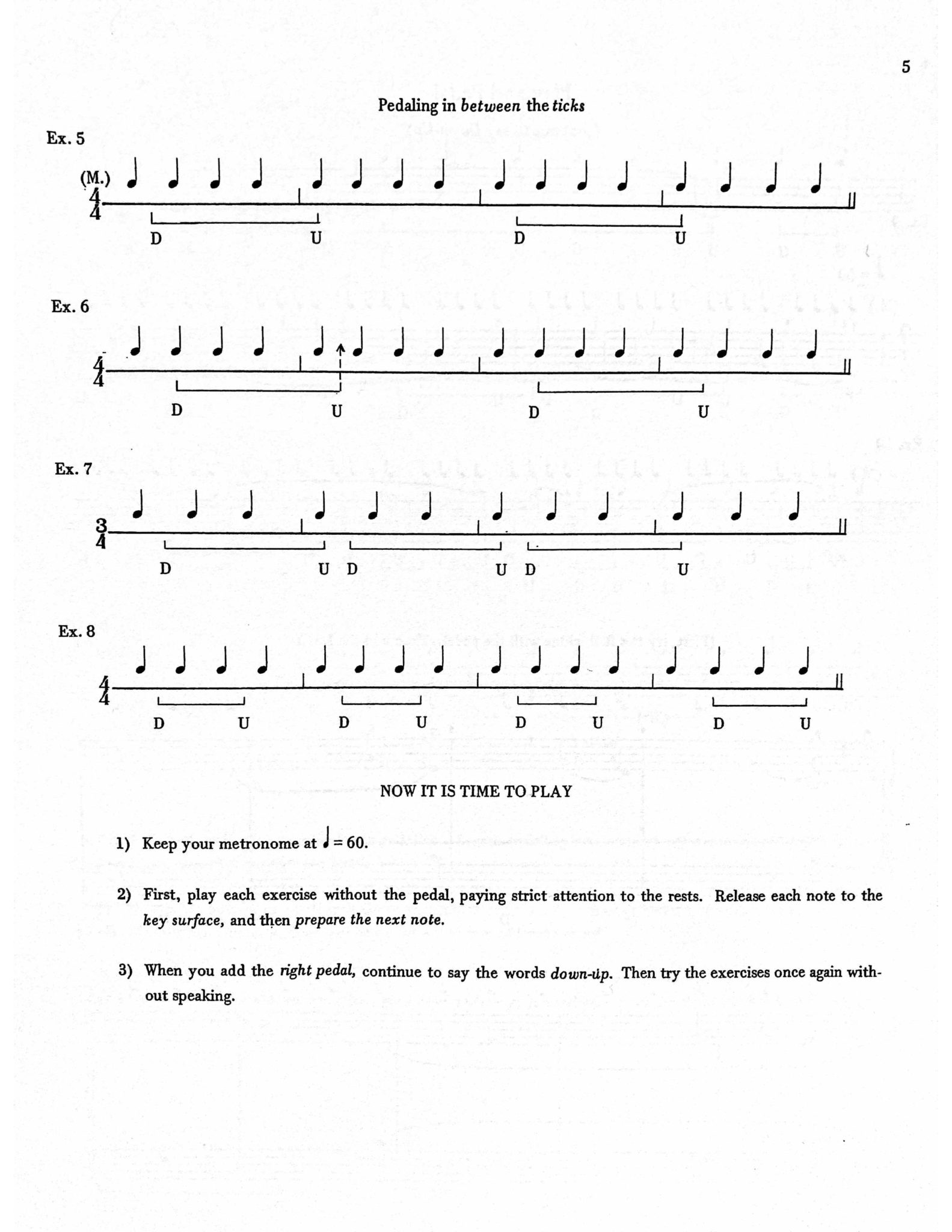
Only after mastering these pedalling skills using a metronome do students then progress to playing notes and connecting them with a pedal. Breaking things down this way allows them to train their feet to obey precise commands.
For the following example Seymour has the student play the simple melody first without pedal but with careful observation of the rests. Then the pedal is added to create the legato connections across the rests. In my experience students are prepared to execute this properly after mastering the earlier exercises.
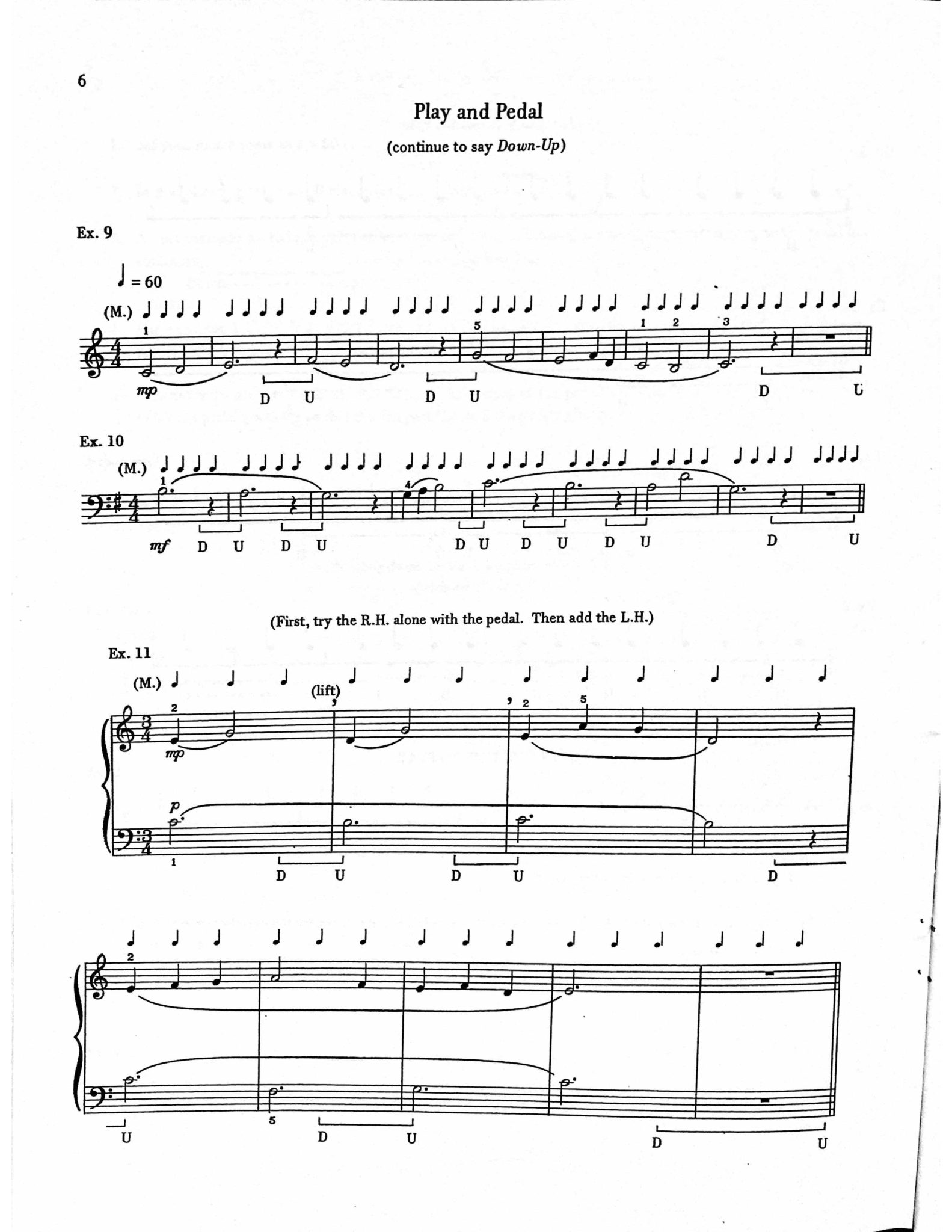
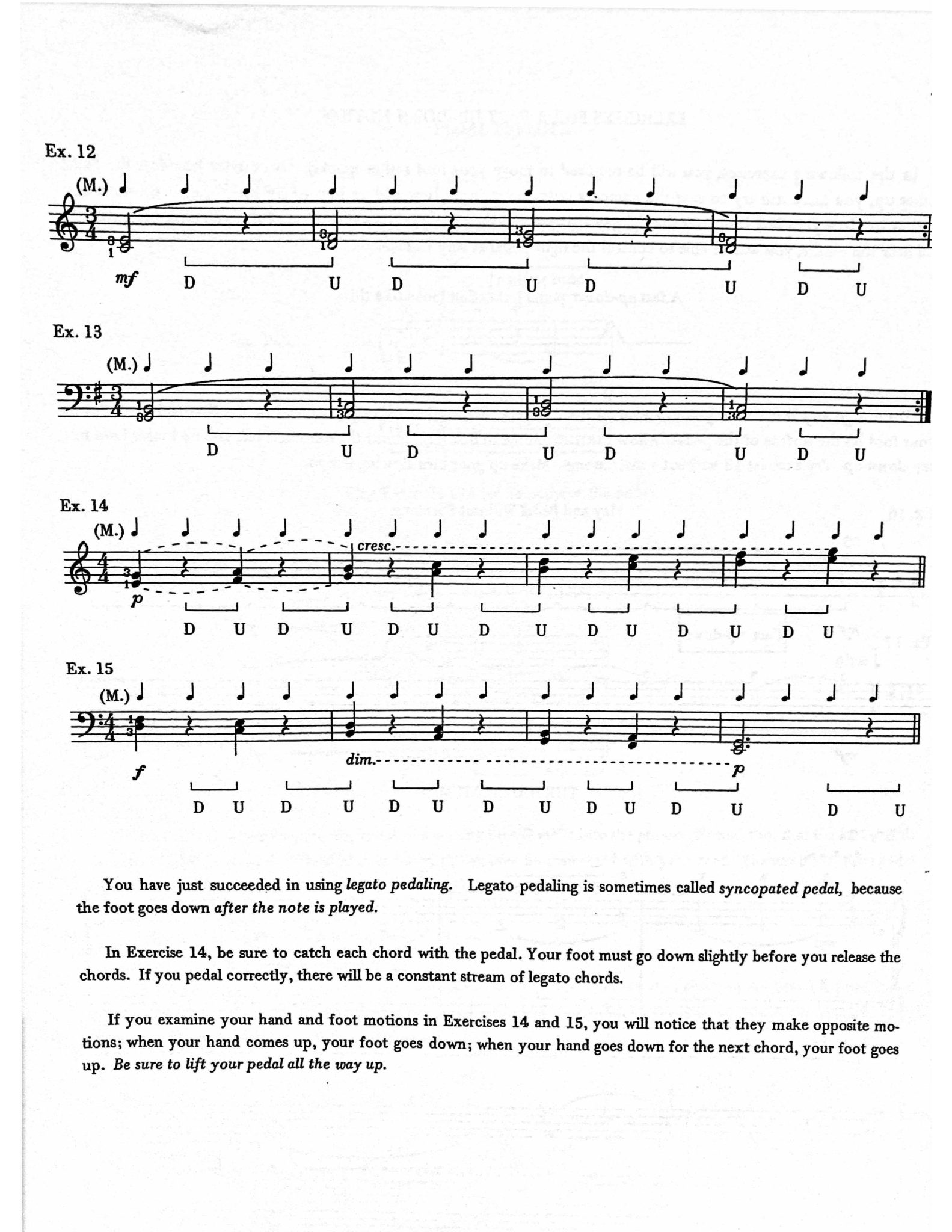
The book then progresses to more complex exercises and then expressive, colourful pieces with carefully marked pedal indications. These pieces are beautiful options for students to offer at recitals and auditions.
As with most elements of piano playing, the most important part is not the technical training of operating the pedals, but rather the training of the ears to hear when everything is being executed correctly. If students can’t hear a hiccup in the middle of a legato passage or a stray slur during a series of separate chords then they won’t know that an adjustment is needed to their pedalling. Additionally, pedals are different on every instrument and students must be able to discern when modifications to what they’ve practiced are necessary. Poor pedalling can obscure all the hard work students have put in preparing their pieces for performance. Teaching them to pedal clearly and to hear when they are achieving the desired results will ensure the clearest, most communicative performances that display all the effort they’ve invested.





